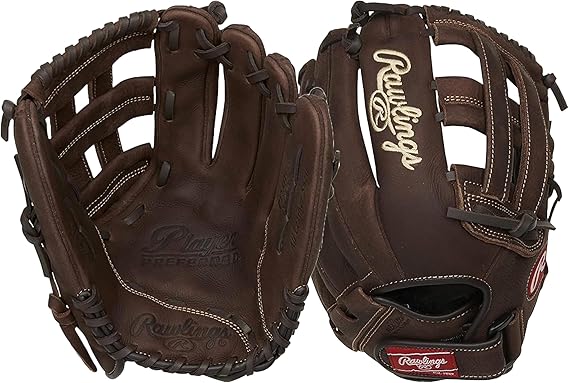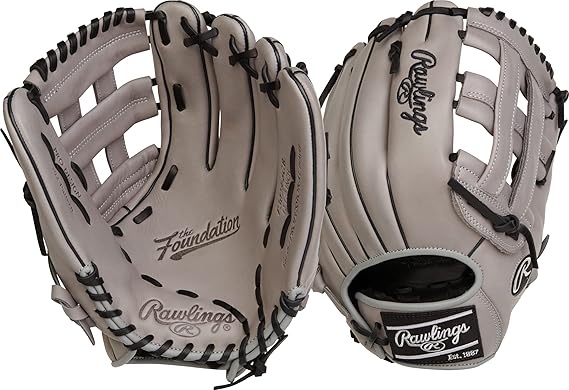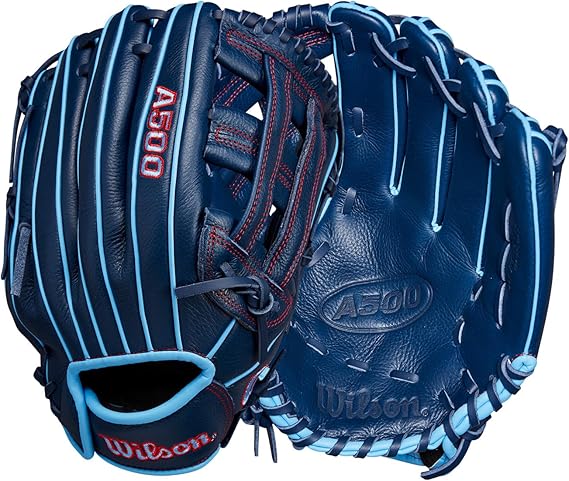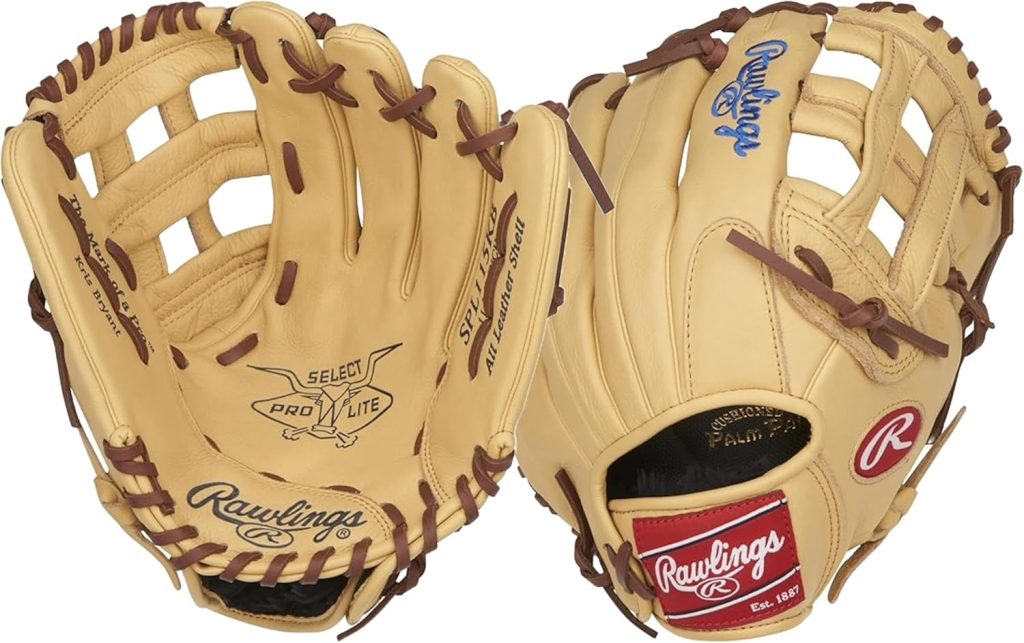Baseball Glove Size Chart
Recommended Glove Size
Glove Size:
Glove Type:
Looking for the perfect fit? Check out these Best-Selling Baseball Glove.






The Ultimate Guide to Baseball Glove Size Chart – How to Choose the Right Glove for Your Game
A baseball glove is a critical piece of equipment for every player, whether you’re just starting out or have been playing the game for years. Having the right glove not only ensures comfort and performance but also plays a significant role in your ability to field, catch, and throw the ball efficiently.
Choosing the perfect glove isn’t always as simple as picking one off the shelf. The size, fit, and type of glove can dramatically influence your performance on the field. We’ll dive into the baseball glove size chart and explore how to select the best glove for your specific needs. Whether you’re a pitcher, catcher, infielder, or outfielder, this guide will provide you with all the information you need to make an informed decision.
Why Does Glove Size Matter?
A properly sized glove allows you to catch balls cleanly, make quicker transitions between plays, and feel more comfortable in your overall movements. On the other hand, a poorly fitting glove can hinder your ability to make quick, accurate throws, catch the ball securely, and can even lead to hand or wrist injuries over time.
Just like batting, fielding is about consistency, control, and comfort. Your glove’s fit will affect your ability to move swiftly on the field, your catch radius, and how securely you can grip the ball when making a throw.
How to Measure for the Right Baseball Glove
When it comes to choosing the perfect glove, there are a few key factors to consider, including glove size, position, and age group. Here’s a breakdown of how to measure the glove size that suits you best:
- Measure Your Hand:
- Use a tape measure to measure the distance from the tip of your middle finger to the base of your palm (where your wrist begins). This is the key measurement in determining glove size.
- Glove Size:
- Gloves are measured in inches, typically ranging from 9 to 13 inches in length. The size corresponds to the distance between the thumb and the tip of the middle finger when the glove is laid flat.
- Position-Specific Fits:
- Infielders generally prefer gloves between 11 and 12 inches, as smaller gloves allow for quicker ball transfer and more maneuverability.
- Outfielders, on the other hand, may go for gloves between 12 and 13 inches for a larger pocket and more reach.
- Pitchers tend to choose gloves in the 11.5 to 12.5-inch range, with an emphasis on versatility and concealment of the ball.
- Catchers wear specialized mitts, which are significantly different in size and shape compared to standard fielding gloves.
Now that we know the general steps for measuring and selecting glove size, let’s dive into the details of the Baseball Glove Size Chart.
Baseball Glove Size Chart: Choosing Based on Age and Position
Baseball gloves are sized according to age, position, and sometimes hand preference (left or right). It’s essential to choose a glove that fits your position’s specific needs. Below is a comprehensive baseball glove size chart:
1. Youth Baseball Gloves (Ages 5-10)
At this stage, young players typically need gloves that are easy to maneuver and lightweight. A proper fit will help kids learn to catch, throw, and feel confident on the field.
| Age Group | Glove Size (inches) | Recommended Position |
|---|---|---|
| Under 5 years old | 9 – 10 inches | T-ball/Beginner |
| Ages 5-7 | 10 – 11 inches | Infield/Outfield |
| Ages 8-10 | 11 – 11.5 inches | Infield/Outfield |
For younger players, T-ball gloves are specifically designed to be smaller and more flexible. As they grow, the gloves become slightly larger to accommodate better catching and fielding skills.
2. Youth Baseball Gloves (Ages 11-13)
As players approach their teenage years, they start specializing in particular positions. The gloves grow in size to meet the increasing demands of the game, with more room for ball control and fielding agility.
| Age Group | Glove Size (inches) | Recommended Position |
|---|---|---|
| Ages 11-13 | 11 – 12 inches | Infield/Outfield |
| Ages 12-13 | 12 – 12.5 inches | Pitcher/Outfield |
At this age, players can handle gloves with more versatility. Infielder gloves range from 11 – 11.5 inches, while outfielders may prefer gloves closer to 12 inches. The increased size ensures the glove offers enough space to secure and catch the ball, while also maintaining maneuverability for quick throws.
3. Adult Baseball Gloves (Ages 14 and up)
Once players reach adulthood or the high school level, the gloves become more specialized based on their position and style of play. At this point, players should be fully aware of their needs on the field and choose a glove that helps elevate their performance.
| Age Group | Glove Size (inches) | Recommended Position |
|---|---|---|
| Ages 14-16 | 11 – 11.75 inches | Infield |
| Ages 14-16 | 12 – 12.5 inches | Outfield/Pitcher |
| Ages 17 and up | 12 – 13 inches | Outfield |
| Ages 17 and up | 11.5 – 12 inches | Pitcher |
| Ages 17 and up | 32.5 – 34 inches | Catcher Mitt |
Adult players have a broader range of gloves to choose from, depending on their playing position.
- Infielders typically go for gloves between 11 – 12 inches, offering the balance of quick hands and precise control.
- Outfielders tend to prefer gloves ranging from 12 – 13 inches, providing a larger pocket for catching fly balls and an extended reach.
- Pitchers often go for gloves that are 11.5 to 12 inches in size, allowing for control, ease of throwing, and concealment of the ball.
- Catchers require specialized mitts that are larger, with mitts ranging from 32.5 to 34 inches designed to catch fast pitches and provide optimal protection.
How to Choose the Right Baseball Glove
Choosing the right glove goes beyond just picking a size from the chart. Other important factors include glove fit, material, and break-in period.
1. Glove Fit
A glove should feel snug but not tight. It’s important that your glove fits comfortably on your hand, with enough room to move your fingers but not so much space that it causes the ball to slip out. A glove that’s too big may make it difficult to secure the ball, while a glove that’s too small may limit your ability to catch balls effectively.
Here are a few tips for checking glove fit:
- Ensure there is enough room between the palm and the top of your fingers.
- Your hand should fit comfortably in the glove, with no significant gaps.
- The glove should not pinch or feel too tight when you close it.
2. Material
Baseball gloves come in several types of materials, each offering unique features and benefits:
- Leather Gloves: These are the most durable and popular, offering long-lasting wear and excellent performance. Leather gloves take a bit longer to break in but are known for their comfort and flexibility once broken in.
- Synthetic Gloves: These gloves are often lighter and break in faster than leather. They are typically more affordable and good for beginners or younger players who aren’t ready for a high-end leather glove.
- Hybrid Gloves: These gloves combine the best of both worlds, featuring a leather palm with a synthetic back. They offer the durability of leather with the comfort of synthetic materials.
3. Break-In Period
Most leather gloves require a break-in period before they become comfortable. The break-in period can vary, but generally, it takes anywhere from 10 to 30 hours of playing time for a glove to mold to the player’s hand. Players can speed up the break-in process by using techniques such as oiling the glove or using it for catching practice.
Synthetic gloves, on the other hand, usually don’t need much of a break-in period and can be game-ready almost immediately.
Conclusion
Choosing the right baseball glove size is crucial for a player’s comfort, performance, and success on the field. Whether you’re a youth player just starting out or an experienced adult looking for a specialized glove, understanding the size and fit of a glove tailored to your position will make a significant difference.
The baseball glove size chart serves as a great starting point, but it’s important to keep in mind that comfort, material, and break-in time also play key roles in glove selection. By paying attention to these factors and selecting the glove that best fits your hand and style of play, you’ll be sure to enhance your performance in the field.
With the right fit and a high-quality glove, you’ll be prepared to catch anything that comes your way, making you a more effective and confident player. Remember to take the time to try on different gloves, and don’t be afraid to invest in one that feels like it was made just for you. Happy playing, and enjoy the game!
